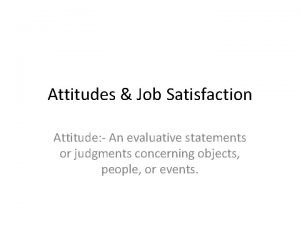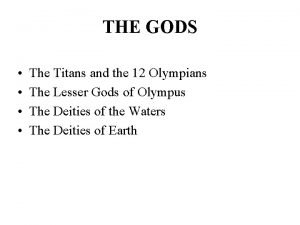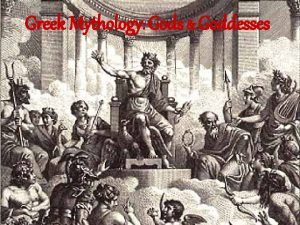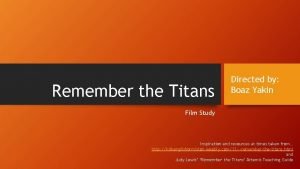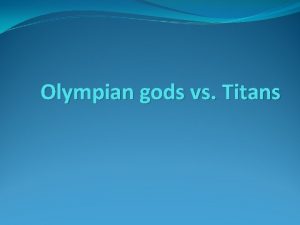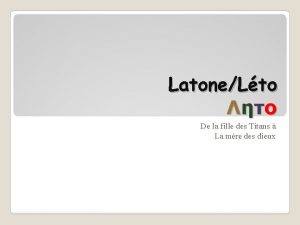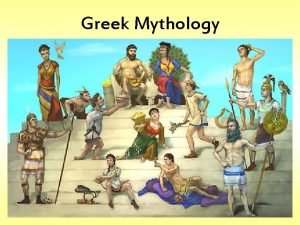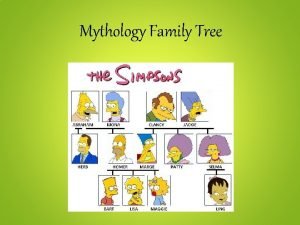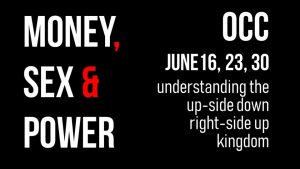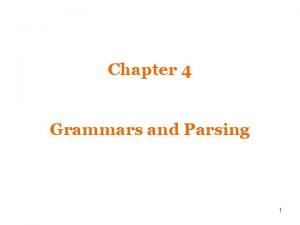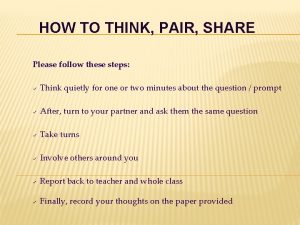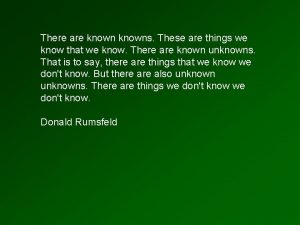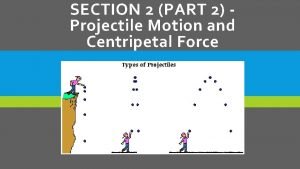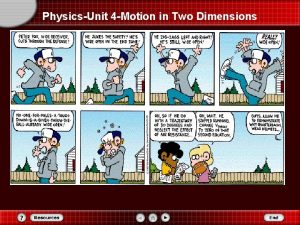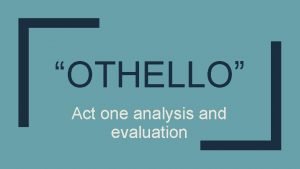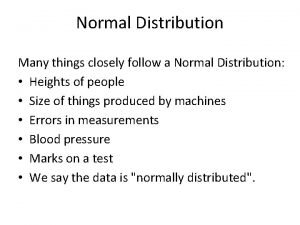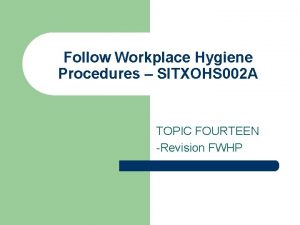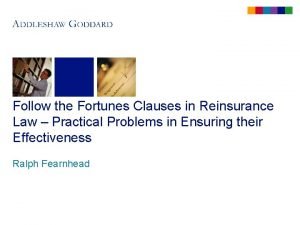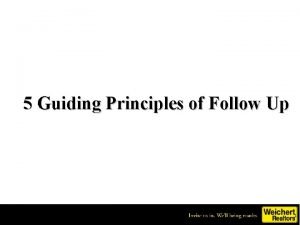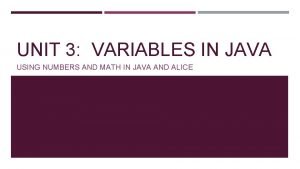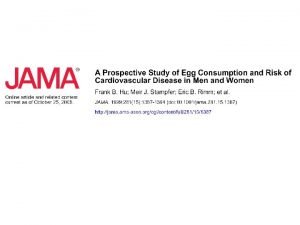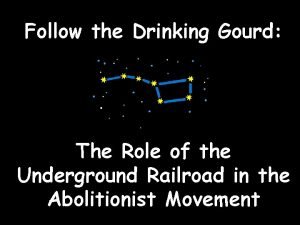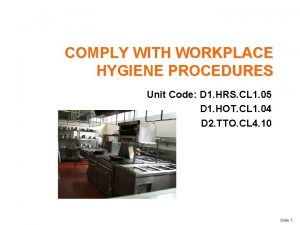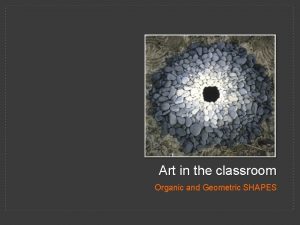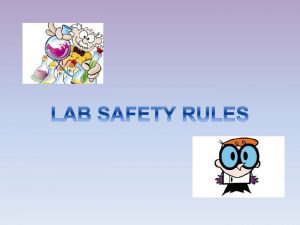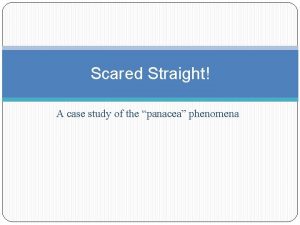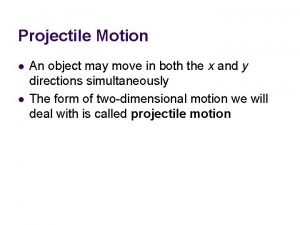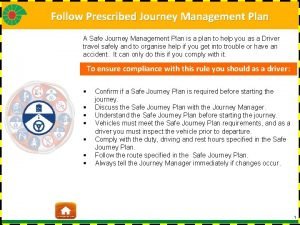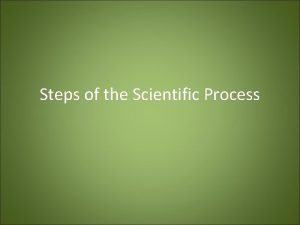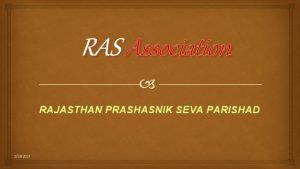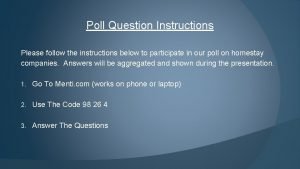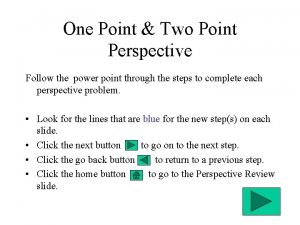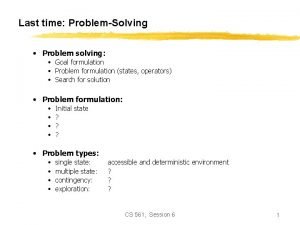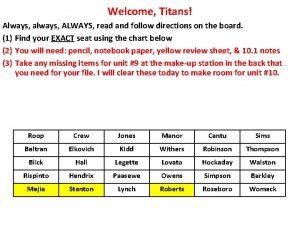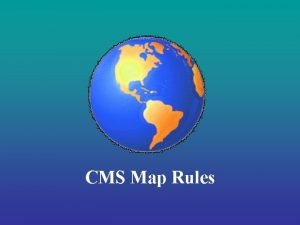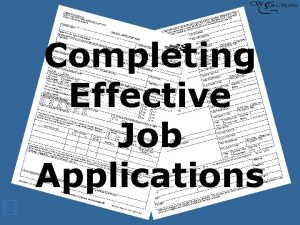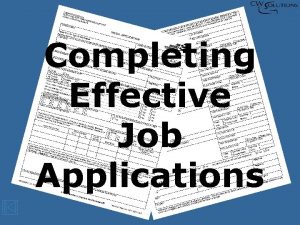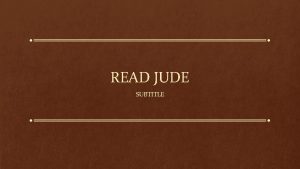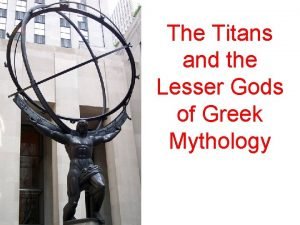Welcome Titans Always always ALWAYS read and follow























































































- Slides: 87

Welcome, Titans! Always, always, ALWAYS, read and follow directions on the board. (1) Find your EXACT seat using the chart below (2) You will need: pencil, textbook, notebook paper, & 8. 1 notes (3) TURN IN MISSING FILES ON FRONT DESK BEFORE OR AFTER NOTES Roop Crew Jones Manor Cantu Sims Beltran Elkovich Kidd Withers Robinson Thompson Blick Hall Legette Lovato Hockaday Walston Rispinto Hendrix Paasewe Owens Simpson Barkley Mejia Stanton Lynch Roberts Roseboro Womack

VOCAB LOG – 8. 1, 04/22 SET UP A NEW VOCAB SHEET. LABEL IT “UNIT #8 VOCAB LOG” AT THE TOP. THEN LABEL TODAY’S WORDS WITH “ 8. 1, 04/22”

VOCAB LOG – 8. 1, 04/22 § IMPORT: goods produced in one country & sold in another § EXPORT: goods produced from one country by another § COMPARATIVE ADVANTAGE: ability of a country to produce a good at a lower opportunity cost that another country § DOMESTIC: relating to within your country § TARIFF: taxes on imported goods to protect domestic industries § QUOTA: limits on amount of imported goods to protect domestic industries § FREE TRADE: removal of barriers to trade like quotas & tariffs § EXCHANGE RATE: price of one nation’s currency in terms of another nation’s BALANCE OF TRADE: difference b/w value nation’s exports & what they import § TRADE SURPLUS: when the value of a nation’s exports is greater than it’s imports § TRADE DEFICIT: when the value of a nation’s imports is greater than it’s exports § GLOBAL INTERDEPENDENCE: people & nations rely on one another for goods, services, & natural resources § PROTECTIONISM: when nations try to protect their industries from foreign competition, usually w/ tariffs & quotas

CIVICS & ECONOMICS UNIT #8: FOUNDATIONS OF ECONOMICS (PART II) QUOTE OF THE DAY! “Almost all wars … are trade wars connected with some material interest. They are always disguised as sacred wars, made in the name of God, or civilization, or progress. But … almost all of them, have been trade wars. ” – Eduardo Galeano

DIRECTIONS: • ALL BOOKS OPEN TO PAGE 708 • I WILL READ ALOUD AS YOU FOLLOW ALONG • WHEN I AM FINISHED, INDIVIDUALLY OR WITH A PARTNER BESIDE YOU RE-READ AND COMPLETE THE PORTION OF NOTES DESIGNATED BY MR. K. • IF YOU HAVE TROUBLE WITH BLANKS AFTER RE-READING, PLEASE RAISE YOUR HAND & CONTINUE MOVING ON TO EFFECTIVELY MANAGE YOUR TIME • WHEN TIME IS CALLED, YOU WILL EXACTLY TWO MINUTES TO CHECK YOUR WORK ON THE SLIDES PROVIDED. • THESE SLIDES ARE NOT FOR YOU TO COPY BECAUSE OF INEFFECTIVE TIME MANAGEMENT. • AFTER THE TWO MINUTES IS CALLED, WE WILL MOVE ON TO THE NEXT SECTION • IF YOU MISS NOTES, PLEASE CHECK THE WEBSITE kcivecon. weebly. com OR ASK TO BORROW A SLIDE PACKET AT THE END OF NOTES OR BORROW NOTES FROM A FRIEND • YOU CAN COMPLETE THESE SUCCESSFULLY BY REMAINING ON TASK

8. 1 – WHY NATIONS TRADE (p. 707) § Nations trade with one another to obtain GOODS/SERVICES they themselves cannot produce EFFICIENTLY § No country produces everything it needs to SURVIVE, & DEPENDS on other COUNTRIES § Because of INTERNATIONAL TRADE, § Americans eat FRUIT during the WINTER that is grown in CENTRAL AMERICA, & § American-made COMPUTERS are sold in AFRICA & ASIA § Trade involves: § EXPORTS: goods/services that are SOLD to other countries § IMORTS: goods/services that are PURCHASED from other countries § Obtaining scarce goods: § Trade is one way that countries solve the problem of SCARCITY § Nations trade b/c they could not otherwise HAVE THEM or have them as CHEAPLY § U. S. IMPORTS industrial diamonds from other countries because we have almost no DEPOSITS § Other countries cannot produce commercial AIRCRAFT because they lack the necessary FACTORIES or SKILLED WORKERS, so we EXPORT them to these countries

8. 1 – WHY NATIONS TRADE (p. 707 -708) § Comparative advantage: § The main reason countries trade with one another is COMPARATIVE ADVANTAGE, or the ability for a country to produce a good at a RELATIVELY LOWER COSTS than another country can § Ex. : The U. S. could make TELEVISIONS, but other countries can make them at a LOWER COST; therefore, the U. S. IMPORTS televisions from abroad § Specialization: one effect of comparative advantage is that nations SPECIALIZE, or focus their SCARCE resources to produce goods/services that they can produce BETTER than OTHER COUNTRIES § Factors of production: comparative advantage can be based on NATURAL RESOURCES, LABOR, & HUMAN/PHYSICAL CAPITAL § Ex. : SAUDI ARABIA has huge deposits of OIL that allows them to EXPORT to other countries § Ex. : The U. S. has many HIGHLY SKILLED workers & ADVANCED TECHNOLOGY which gives it a comparative advantage in making EXPENSIVE products such as aircraft & WEAPONS

8. 1 – WHY NATIONS TRADE (p. 708) § Creating jobs: supporters of expanded international trade argue that it creates JOBS § Because countries have comparative advantages in certain areas, they can EXPORT these products to other countries, winning more ORDERS, requiring these businesses to HIRE MORE WORKERS § Ex. : If American airplane makers only built planes for American airline companies, they would have a LIMITED MARKET; but if they EXPORT planes, they win more ORDERS, which leads to HIRE more workers

8. 1 – RESTRICTIONS & INTEGRATION (p. 708) § Countries sometimes try to PROTECT their ECONOMIES by setting up TRADE BARRIERS § Many CONSUMERS like to buy FOREIGN-MADE, or IMPORTED, GOODS because they are CHEAPER than goods made in their own countries § When this happens, companies in the CONSUMER’S own country LOSE SALES, leading to LOWER PRODUCTION & LAY-OFFS of WORKERS § When this happens, affected workers & industries often DEMAND that GOVERNMENT step in & PROTECT their INDUSTRIES § Two ways that govts set up barriers to international trade are TARIFFS & QUOTAS § TARIFFS: TAXES on IMPORTED GOODS (also called CUSTOMS DUTIES) § Ex. : If he U. S. wants to protect American STEEL PRODUCERS, it can put a TARIFF on all important steel, thus ADDING to its price. § The goal of most tariffs is to make the PRICE of IMPORTED goods HIGHER than the price of the same goods produced DOMESTICALLY § QUOTAS: LIMITS on the AMOUNT of FOREIGN GOODS that are IMPORTED § Sometimes people want a foreign-made product so badly that HIGHER PRICES have LITTLE EFFECT, that they will PURCHASE them anyway § Ex. : During 1970 s, JAPANESE-made cars were so POPULAR in the U. S. , that the JOBS of American car manufacturers were threatened; Pres. Reagan eventually placed a QUOTA on Japanese-made cars to protect American car manufacturers

8. 1 – RESTRICTIONS & INTEGRATION (p. 710) § Free trade: § Most policymakers in government agree that COSTS of trade barriers are HIGHER than their BENEFITS § Therefore, most countries now try to REMOVE TRADE BARRIERS § FREE TRADE: REDUCING or eliminating BARRIERS to TRADE § Trade agreements: § EUROPEAN UNION (E. U. ): organization of European countries where there are no trade barriers § GOODS/SERVICES & WORKERS move FREELY among these member COUNTRIES § In 2002, EU countries became even more closely linked when most member countries began to use a COMMON CURRENCY called the EURO § North American Free Trade Agreement (NAFTA): signed by USA, CANADA, & MEXICO § Pact to eventually ELIMINATE all TRADE BARRIERS among the three countries § OPPONENTS of NAFTA argue that American workers would LOSE their jobs because U. S. companies would move to MEXICO to take advantage of CHEAPER WAGES & less stringent laws protecting WORKERS’ rights & the ENVIRONMENT § SUPPORTERS of NAFTA argue that increased trade would stimulate GROWTH & put more LOW-COST goods on the market

8. 1 – RESTRICTIONS & INTEGRATION (p. 710) § World Trade Organization (W. T. O. ): § An international body that OVERSEES trade among nations § Organizes NEGOTIATIONS about trade RULES, provides HELP to countries trying to DEVELOP their economies, & settles trade DISPUTES b/w countries § Opponents argue that WTO policies favor large CORPORATIONS over WORKERS, the ENVIRONMENT, & POOR countries

8. 1 – FINANCING TRADE (p. 712) § The USA uses the DOLLAR as its MEDIUM of EXCHANGE, while Mexico uses the PESO & Japan uses the YEN. § EXCHANGE RATE: the PRICE of your nation’s currency in terms of another nation’s § Exchange rates have an important effect on a nation’s BALANCE of TRADE because they are FLEXIBLE, or adjustable, and can change DAILY. § Balance of trade: the DIFFERENCE b/w the VALUE of a nation’s EXPORTS & IMPORTS § Balance of trade = (value of EXPORTS) – (value of IMPORTS) § POSITIVE balance of trade: when the value of a nation’s EXPORTS exceeds the value of a nation’s IMPORTS § EXPORTS > IMPORTS § EXPORTS - IMPORTS > 0 § Also known as a TRADE SURPLUS

8. 1 – FINANCING TRADE (p. 713) § NEGATIVE balance of trade: when the value of IMPORTS coming into a country exceeds the value of EXPORTS going out of that country § EXPORTS < IMPORTS § EXPORTS - IMPORTS < 0 § Also known as a TRADE DEFICIT § Trade deficits cause the value of the DOLLAR to DECREASE in foreign EXCHANGE MARKETS, usually causing UNEMPLOYMENT in IMPORT industries & rising EMPLOYMENT in EXPORT industries

8. 1 – GLOBAL INTERDEPENDENCE (p. 735) § Today, we live in an era of GLOBAL ECONOMIC INTERDEPENDENCE, in which countries depend on one another for goods, services, & natural resources § Advantages: § Business can make greater PROFITS because they have more MARKETS in which to sell § Greater COMPETITION can result in lower PRICES & a wider CHOICE of products § Disadvantages: § May force weaker companies that cannot COMPETE out of BUSINESS, hurting the ECONOMIES of some countries & costing workers their JOBS § Large corporations can out-maneuver smaller businesses by relocating to countries with less stringent laws protecting WORKERS & the ENVIRONMENT § PROTECTIONISM: protecting domestic INDUSTRIES from FOREIGN COMPETITION, usually through the use of TARIFFS or QUOTAS on imports

Welcome, Titans! Always, always, ALWAYS, read and follow directions on the board. (1) Find your EXACT seat using the chart below (2) You will need: pencil, textbook, notebook paper, & 8. 2 notes (3) TURN IN MISSING FILES ON FRONT DESK BEFORE OR AFTER NOTES Roop Crew Jones Manor Cantu Sims Beltran Elkovich Kidd Withers Robinson Thompson Blick Hall Legette Lovato Hockaday Walston Rispinto Hendrix Paasewe Owens Simpson Barkley Mejia Stanton Lynch Roberts Roseboro Womack

VOCAB LOG – 8. 2, 04/25 § DEMAND: desire, willingness, & ability to buy a product § DEMAND SCHEDULE: table listing various quantities demanded of a good for any given price § DEMAND CURVE: graph showing quantity demanded of a good at any given price § LAW OF DEMAND: all things equal, as price of a good increases, quantity demanded of that good decreases § UTILITY: usefulness or satisfaction we get from using a good § MARGINAL UTILITY: the additional satisfaction we get from consuming one more unit of a good § SUBSTITUTE: a good that is bought in place of another good § COMPLEMENT: a good that is bought together w/ another good § DEMAND ELASTICITY: extent to which a change in price of a good results in a change of the quantity demanded for that good

CIVICS & ECONOMICS UNIT #8: FOUNDATIONS OF ECONOMICS (PART II) QUOTE OF THE DAY! “Almost all wars … are trade wars connected with some material interest. They are always disguised as sacred wars, made in the name of God, or civilization, or progress. But … almost all of them, have been trade wars. ” – Eduardo Galeano

8. 2 – INTRODUCTION TO DEMAND (p. 569) • Demand is the DESIRE, WILLINGNESS, & ABILITY to buy a good/service • Desire: consumer must WANT the good/service • Willingness: consumer must be WILLING to buy the good/service • Ability: consumer must have the RESOURCES to buy good/service • Individual demand schedule & individual demand curve: • Demand schedule: a TABLE that LISTS the various QUANTITIES of a good/service that someone is WILLING to BUY over a RANGE of PRICES • Demand curve: a GRAPH that shows the AMOUNT of a good/service that would be BOUGHT at all possible PRICES in the MARKET • PRICE is drawn on the VERTICAL AXIS(or y-axis) • QUANTITY is drawn on the HORIZONTAL AXIS (or x-axis) • Each point on the curve shows the QUANTITY, or how many UNITS an individual will BUY at any particular PRICE • Each POINT on the graph should match the corresponding PRICE & QUANTITY in the DEMAND SCHEDULE • The demand curve slopes DOWNWARD, or has a negative slope • The demand curve slopes downward b/c people are normally willing to buy LESS of a good/service if the PRICE is HIGH & buy MORE if the PRICE is LOW

8. 2 – INTRODUCTION TO DEMAND (p. 569) • The law of demand: • ALL ELSE BEING EQUAL, QUANTITY & PRICE move in OPPOSITE directions • People will ordinarily buy MORE of a product at a LOW price than at a HIGH price • Ex. : Increased TRAFFIC & PURCHASES at the mall whenever there is a SALE

8. 2 – MARKET DEMAND (p. 570) • Market demand is the TOTAL DEMAND of ALL CONSUMERS for a good/service • Like individual consumer’s demand, market demand for a product can be shown as a demand schedule or a demand CURVE • Marginal utility: (p. 570) • Almost everything we buy provides UTILITY - or pleasure, usefulness, or satisfaction from using the product • Utility for a good/service can VARY from person to person • Ex. : You may get a great deal of enjoyment (high utility) from an i. Pad, but your friend may get very LITTLE • A good/service doesn’t have to have utility for EVERYONE, only for SOME

8. 2 – MARKET DEMAND (p. 572) • DIMINISHING marginal utility (p. 572) • Marginal utility or marginal BENEFIT [HINT: THINK BACK TO UNIT #6] is the ADDITIONAL SATISFACTION we get from consuming ONE more UNIT of a good • Marginal utility DECREASES as more units of a good/service are consumed • Ex. : If you are really hungry before eating pizza, the FIRST slice will give you the most SATISFACTION (and you will be willing to pay a HIGHER price for it), each slice after that gives you LESS additional SATISFACTION (and you will be willing to pay a LOWER price for each additional slice) • Because our marginal utility diminishes with each additional unit consumed, it stands to reason that we are not willing to pay AS MUCH for the SECOND unit of an item as we were for the FIRST; likewise, we are willing to pay less for the third unit as we were for the second unit • DOWNWARD slope of demand curve tells us that we are willing to pay the HIGHEST price for the FIRST unit we consume, a slightly LOWER price for the next unit, an even lower price for the third unit, and so on.

8. 2 – CHANGES IN DEMAND (p. 574) • Several FACTORS can cause MARKET DEMAND for a good/service to CHANGE • These changes can be GRAPHED using a MARKET DEMAND CURVE • If there is a DECREASE in demand, the curve will shift LEFT of the original demand curve; in other words, FOR ANY GIVEN PRICE, DEMAND OF A GOOD (QD) WILL BE LESS THAN WHAT IT WAS ORINGINALLY • If there is an INCREASE in demand, the curve will shift RIGHT of the original demand curve; in other words, FOR ANY GIVEN PRICE, DEMAND OF A GOOD (QD) WILL BE MORE THAN WHAT IT WAS ORINGINALLY • Factors that determine demand: • Changes in POPULATION: • Demand for a good in a particular market area is related to the NUMBER of consumers in the area • More people in an area means HIGHER demand; the demand will INCREASE, so the demand curve shifts to the RIGHT (DEMAND INCREASES) • Fewer people in an area means LOWER demand; the demand will DECREASE, so the demand curve shifts to the LEFT (DEMAND DECREASES) • Populations can change b/c of IMMIGRATION, higher/lower BIRTH & DEATH rates

8. 2 – CHANGES IN DEMAND (p. 575) • Changes in consumers’ INCOME: • If the economy is growing, consumers’ incomes will tend to INCREASE; if the economy is not growing, consumers’ incomes will tend to DECREASE • If consumers’ incomes are increasing, they will have MORE money to SPEND & they are able to buy MORE of a product at a given PRICE; the demand curve will shift to the RIGHT (DEMAND INCREASES) • If consumers’ incomes are decreasing, or they have lost their jobs, they will have LESS money to SPEND & they will be able to buy LESS of a product at a given PRICE; the demand curve will shift to the LEFT (DEMAND DECREASES) • Changes in consumers’ TASTES or preferences: • The POPULARITY of a product can affect demand • When a product becomes POPULAR, more people are willing to buy it at any given price; the demand curve will shift to the RIGHT (DEMAND INCREASES) • When a product FADES in popularity, fewer people are willing to buy it at any given price; the demand curve will shift to the LEFT (DEMAND DECREASES) • Ex. : During holiday shopping season, new product may become a “MUST-BUY” of the year, so for any given PRICE, demand will be HIGHER than what it would ordinarily be • Ex. : After Halloween, the demand for Halloween candy will DECREASE, because consumers are willing to buy LESS of it for any given price

8. 2 – CHANGES IN DEMAND (p. 575) • Changes in consumers’ EXPECTATIONS: • Expectations refer to the way we think about the FUTURE • If consumers are excited about a technological breakthrough in the near future, they may be willing to buy LESS current technology; demand curve will shift LEFT (DEMAND DECREASES) • If consumers are WORRIED about the economy, they may be will to buy LESS consumer goods; the demand curve will shift to the LEFT (DEMAND DECREASES) • If consumers expect a SHORTAGE of a good, such as GASOLINE, they tend to STOCK UP on it; the demand curve will shift to the RIGHT (DEMAND INCREASES) • PRODUCT-RELATED changes: • Factors that shift demand can be related to the PRODUCTS themselves • Demand can be influenced by the PRICE or QUANTITY of RELATED PRODUCTS • Ex. : Demand for older computers DECREASES when faster models come out • Ex. : Demand for a brand of tire may INCREASE if another brand has SAFETY problems

8. 2 – CHANGES IN DEMAND (p. 575 -576) • Changes in the PRICE of RELATED GOODS: • Two types of related goods: SUBSTITUTES & COMPLEMENTS • Substitute goods: when consumers can use one good IN PLACE of another • Ex. : BUTTER & MARGARINE; hot dogs & hamburgers • If price of one good increases, demand for the other good will INCREASE & the demand curve will shift to the RIGHT; if the price of one good decreases, demand for the other good will DECREASE & the demand curve will shift to the LEFT • Complementary goods: when consumers buy goods that are USED TOGETHER • Ex. : lightbulbs & LAMPS, peanut butter & JELLY • If price of one good increases, demand for the other good will DECREASE & the demand curve will shift to the LEFT; if the price of one good decreases, demand for the other good will INCREASE & the demand curve will shift to the RIGHT

8. 2 – CHANGES IN DEMAND (p. 576) • Change in quantity demand: DIFFERENT FROM INCREASING OR DECREASING DEMAND • Change in demand refers to a SHIFT of the ENTIRE demand curve • Change in quantity demanded refers to MOVEMENT from one point on a demand curve to another • Only factor that directly causes a change in quantity demanded is PRICE

8. 2 – ELASTICITY OF DEMAND (p. 577 -578) • Demand elasticity: the extent to which a change in PRICES causes a change in the QUANTITY DEMANDED of a good/service (HOW STRETCHY IS DEMAND WHEN PRICE CHANGES) • Which items have elastic demand? (Small price changes can have a BIG effect on quantity demanded) • When there are ATTRACTIVE SUBSTITUTE goods that consumers could buy instead • When consumers can DELAY purchasing an item because they think prices will go down • For EXPENSIVE, or higher-priced items, like cars • Which items have inelastic demand? (Large price changes can have a SMALL effect on quantity demanded) • SEASONAL items (items that people ordinarily consume at certain times of the year) • Items with few SUBSTITUTES (medicines, electricity, etc. ) • NECESSITIES, or things needed for survival or health

Welcome, Titans! Always, always, ALWAYS, read and follow directions on the board. (1) Find your EXACT seat using the chart below (2) You will need: pencil, textbook, notebook paper, & 8. 3 notes (3) TURN IN MISSING FILES ON FRONT DESK BEFORE OR AFTER NOTES (4) TURN IN MISSING VOCAB EXIT SLIPS (8. 1, 8. 2) ON MY DESK BEFORE OR AFTER NOTES Roop Crew Jones Manor Cantu Sims Beltran Elkovich Kidd Withers Robinson Thompson Blick Hall Legette Lovato Hockaday Walston Rispinto Hendrix Paasewe Owens Simpson Barkley Mejia Stanton Lynch Roberts Roseboro Womack

VOCAB LOG – 8. 3, 04/26 § SUPPLY: the various quantities of a good/service producers/suppliers are willing to sell at all possible market prices § SUPPLY CURVE: graph that shows the amount of good/service that would be supplied at all possible market prices § SUPPLY SCHEDULE: table that shows amount of good/service that would be supplied at various market prices § LAW OF SUPPLY: principle that producers are willing to offer more for sale at higher prices & less at lower prices (prices & quantity supplied change in same direction) § PROFIT MOTIVE: main incentive for producers is to earn over & beyond what they spend making a good/service (that their revenues will exceed their costs) § MARKET SUPPLY: total combined supply schedules for all producers/suppliers of a good/service § PRODUCTIVITY: when workers are more efficient (greater output at a lower cost) § SUBSIDY: a govt payment to an indv or business for certain actions § SUPPLY ELASTICITY: measure of how quantity supplied of a good/service changes in response to changes in price

CIVICS & ECONOMICS UNIT #8: FOUNDATIONS OF ECONOMICS (PART II) QUOTE OF THE DAY! “No one wants advice – only corroboration [agreement]. ” – John Steinbeck

DIRECTIONS: • ALL BOOKS OPEN TO PAGE 708 • I WILL READ ALOUD AS YOU FOLLOW ALONG • WHEN I AM FINISHED, INDIVIDUALLY OR WITH A PARTNER BESIDE YOU RE-READ AND COMPLETE THE PORTION OF NOTES DESIGNATED BY MR. K. • IF YOU HAVE TROUBLE WITH BLANKS AFTER RE-READING, PLEASE RAISE YOUR HAND & CONTINUE MOVING ON TO EFFECTIVELY MANAGE YOUR TIME • WHEN TIME IS CALLED, YOU WILL EXACTLY TWO MINUTES TO CHECK YOUR WORK ON THE SLIDES PROVIDED. • THESE SLIDES ARE NOT FOR YOU TO COPY BECAUSE OF INEFFECTIVE TIME MANAGEMENT. • AFTER THE TWO MINUTES IS CALLED, WE WILL MOVE ON TO THE NEXT SECTION • IF YOU MISS NOTES, PLEASE CHECK THE WEBSITE kcivecon. weebly. com OR ASK TO BORROW A SLIDE PACKET AT THE END OF NOTES OR BORROW NOTES FROM A FRIEND • YOU CAN COMPLETE THESE SUCCESSFULLY BY REMAINING ON TASK

8. 3 – INTRODUCTION TO SUPPLY (p. 581) • Supply refers to the various QUANTITIES of a good/service that PRODUCERS are willing to SELL at any given market PRICE • We can consider supply as an OUTPUT of a single BUSINESS or PRODUCER OR ADD together the supply of the ENTIRE MARKET • Supply is the OPPOSITE of demand • BUYERS demand different QUANTITIES of a good depending on the PRICE sellers ask • SELLERS offer different QUANTITIES of a good depending on the PRICE buyers are willing to pay • Law of supply: • As the PRICE rises or increases for a good, the QUANTITY SUPPLIED (QS) also INCREASES; price and quantity supplied change in the SAME direction • The HIGHER the price of a good, the greater the INCENTIVE is for a producer to produce MORE of that good • Like demand, individual and market supply can be represented in a TABLE as a SUPPLY SCHEDULE and in a GRAPH with the SUPPLY CURVE

8. 3 – GRAPHING THE SUPPLY CURVE (p. 583 -584) • While demand curve has a DOWNWARD (or negative) slope, the supply curve has an UPWARD (or positive slope), reflecting the fact that suppliers/producers are generally willing to offer MORE goods/services at a HIGHER price than at LOWER prices • Profit motive: • Businesses invest TIME, MONEY, & other CAPITAL & RESOURCES to make money • Businesses try to set prices at levels that allow them to COVER COSTS; otherwise, they will LOSE MONEY (REVIEW: their COSTS will exceed their REVENUES, and they will incur a LOSS) • Businesses try to earn a PROFIT that is OVER and ABOVE its COSTS • Making a profit is the primary MOTIVE, or purpose, for a business • Producers can then use these profits to: increase WAGES of employees, INVEST money in new business projects, acquire more SPACE, buy new EQUIPMENT (or PHYSICAL capital), or hire new WORKERS (or LABOR) • Market supply: the total combined SUPPLY SCHEDULE of all businesses that provide the SAME good/service • MARKET SUPPLY CURVE HAS AN UPWARD (OR POSITIVE) SLOPE [MARKET DEMAND CURVES HAVE A DOWNWARD (OR NEGATIVE) SLOPE] • Like the demand curve, the supply curve or supply can be affected by various factors, causing it to shift to the LEFT or RIGHT

8. 3 – CHANGES IN SUPPLY (p. 584 -585) • The PROFIT INCENTIVE (or profit motive) is motivates producers to change supply levels at a given price • Like changes in demand: • An INCREASE in supply will cause the supply curve to shift to the RIGHT, b/c producers are willing to sell a HIGHER QUANTITY of goods at any given price compared to the original supply curve • A DECREASE in supply will cause the supply curve to shift to the LEFT, b/c producers are willing to sell a LOWER quantity of goods at any given price compared to the original supply curve • Factors that affect the supply curve: • COSTS of RESOURCES: costs of raw materials and other FACTORS of PRODUCTION • When costs of resources to produce goods/services decrease, suppliers can make a larger PROFIT at the same price for each unit sold, so they are willing to sell MORE at any given market price (SUPPLY INCREASES SUPPLY CURVE SHIFTS RIGHT) • When costs of resources to produce goods/services decrease, suppliers make a smaller PROFIT at the same price for each unit sold, so they are willing to sell LESS at any given market price (SUPPLY DECREASES SUPPLY CURVE SHIFTS LEFT)

8. 3 – CHANGES IN SUPPLY (p. 585) • PRODUCTIVITY: • When workers are more productive, businesses’ costs DECREASE, allowing suppliers to make a larger PROFIT for each unit sold, so they are willing to sell MORE at any given market price (SUPPLY INCREASES SUPPLY CURVE SHIFTS RIGHT) • When workers are less productive, businesses’ costs INCREASE, forcing suppliers to make a smaller PROFIT for each unit sold, so they are willing to sell LESS at any given market price (SUPPLY DECREASES SUPPLY CURVE SHIFTS LEFT) • TECHNOLOGY: new METHODS & PROCESSES that can SPEED up ways of doing business & CUT COSTS • New technology that cuts costs allows suppliers to larger profit at the same price for each unit sold, so suppliers are willing to sell MORE at any given market price (SUPPLY INCREASES SUPPLY CURVE SHIFTS RIGHT) • GOVERNMENT POLICIES & increasing TAXES: increased government REGULATIONS restrict, or LIMIT, supply b/c they cause they usually cause suppliers’ costs to INCREASE (ex. : rise in MINIMUM WAGE, or new SAFETY REGULATIONS) • New government regulations or taxes can increase PRODUCTION COSTS to suppliers, so that suppliers make a smaller profit at the same price for each unit sold, so they are willing to sell LESS at any given market price (SUPPLY DECREASES SUPPLY CURVE SHIFTS LEFT)

8. 3 – CHANGES IN SUPPLY (p. 585) • SUBSIDIES: government PAYMENTS to INDIVIDUALS, BUSINESSES, & other groups for certain actions • Subsidies lower production costs to suppliers, so that suppliers make a larger profit at the same price for each unit sold, so they are willing to sell MORE at any given market price (SUPPLY INCREASES SUPPLY CURVE SHIFTS RIGHT) • EXPECTATIONS: • If producers expect CONSUMER DEMAND to decrease in the FUTURE, they will supply LESS (SUPPLY DECREASES SUPPLY CURVE SHIFTS LEFT) • If producers expect consumer demand to increase in the future, they will supply MORE (SUPPLY INCREASES SUPPLY CURVE SHIFTS RIGHT) • NUMBER of SUPPLIERS: • The larger the number of suppliers, the GREATER the market supply (SUPPLY INCREASES SUPPLY CURVE SHIFTS RIGHT) • If suppliers leave the market, market supply goes down (SUPPLY DECREASES SUPPLY CURVE SHIFTS LEFT)

8. 3 – ELASTICITY OF SUPPLY (p. 585) • Supply elasticity measures how the QUANTITY SUPPLIED of a good/service changes in RESPONSE to a change in PRICES • If the quantity supplied changes a great deal when prices change, that good is said to be SUPPLY ELASTIC • Usually, goods that can be made QUICKLY and do not require huge amounts of CAPITAL or SKILLED LABOR to produce that good are supply ELASTIC (such as CANDY or most other FOODS, especially during special HOLIDAY times throughout the year) • If the quantity supplied changes very little when prices change, that good is said to be SUPPLY INELASTIC • Usually, goods that require suppliers/producers to INVEST large sums of money to produce that good are supply INELASTIC (such as OIL)

Welcome, Titans! Always, always, ALWAYS, read and follow directions on the board. (1) Find your EXACT seat using the chart below (2) You will need: pencil, textbook, notebook paper, & 8. 4 notes (3) TURN IN MISSING FILES ON FRONT DESK BEFORE OR AFTER NOTES (4) TURN IN MISSING VOCAB EXIT SLIPS (8. 1, 8. 2, 8. 3) ON MY DESK BEFORE OR AFTER NOTES Roop Crew Jones Manor Cantu Sims Beltran Elkovich Kidd Withers Robinson Thompson Blick Hall Legette Lovato Hockaday Walston Rispinto Hendrix Paasewe Owens Simpson Barkley Mejia Stanton Lynch Roberts Roseboro Womack

VOCAB LOG – 8. 4, 04/27 § SURPLUS: situation in which quantity supplied exceeds quantity demanded; signals that prices are too high § SHORTAGE: situation in which quantity demanded exceeds quantity supplied; signals that prices are too low § EQUILIBRIUM PRICE: price at which amount producers are willing to sell equals amount consumers are willing to buy § PRICE CEILING: maximum price that can be charged for a good/service, set by govt, usually below equilibrium price & often resulting in shortages § PRICE FLOOR: minimum price that can be charged for a good/service, set by govt, usually above equilibrium price & often resulting in surpluses § MINIMUM WAGE: lowest legal wage that can be paid to workers; price floor set for workers who supply their labor to employers

CIVICS & ECONOMICS UNIT #8: FOUNDATIONS OF ECONOMICS (PART II) QUOTE OF THE DAY! “There is no substitute for hard work. ” – Thomas Edison

DIRECTIONS: • ALL BOOKS OPEN TO PAGE 708 • I WILL READ ALOUD AS YOU FOLLOW ALONG • WHEN I AM FINISHED, INDIVIDUALLY OR WITH A PARTNER BESIDE YOU RE-READ AND COMPLETE THE PORTION OF NOTES DESIGNATED BY MR. K. • IF YOU HAVE TROUBLE WITH BLANKS AFTER RE-READING, PLEASE RAISE YOUR HAND & CONTINUE MOVING ON TO EFFECTIVELY MANAGE YOUR TIME • WHEN TIME IS CALLED, YOU WILL EXACTLY TWO MINUTES TO CHECK YOUR WORK ON THE SLIDES PROVIDED. • THESE SLIDES ARE NOT FOR YOU TO COPY BECAUSE OF INEFFECTIVE TIME MANAGEMENT. • AFTER THE TWO MINUTES IS CALLED, WE WILL MOVE ON TO THE NEXT SECTION • IF YOU MISS NOTES, PLEASE CHECK THE WEBSITE kcivecon. weebly. com OR ASK TO BORROW A SLIDE PACKET AT THE END OF NOTES OR BORROW NOTES FROM A FRIEND • YOU CAN COMPLETE THESE SUCCESSFULLY BY REMAINING ON TASK

8. 4 – MARKETS & PRICES (p. 588 -589) • The opposing forces of SUPPLY & DEMAND work together in the market to establish PRICES • In our economy PRICES form the basis of ECONOMIC DECISIONS • Price adjustment process: • Markets consist of all BUYERS & SELLERS of a product • We label the demand curve as D (REVIEW: DEMAND CURVE HAS A DOWNWARD SLOPE) • We label the supply curve as S (REVIEW: SUPPLY CURVE HAS AN UPWARD SLOPE) • Where these curves INTERSECT determines the PRICE & QUANTITY of product sold • Surplus: the amount by which the quantity SUPPLIED exceeds, or is higher, than the quantity DEMANDED • The surplus is shown as the HORIZONTAL distance between SUPPLY & DEMAND curves at any price ABOVE where the curves INTERSECT • Signals that prices are too HIGH, & that consumers are UNWILLING to pay the PRICE in large enough numbers to SATISFY producer’s output • In a COMPETITIVE market, a surplus will not EXIST for long; suppliers will have to LOWER their PRICES if they want to SELL all of their product

8. 4 – MARKETS & PRICES (p. 589) • Shortage: the amount by which the quantity DEMANDED exceeds, or is higher, than the quantity SUPPLIED • The shortage is shown as the HORIZONTAL distance between the SUPPLY & DEMAND curves at any price BELOW where the curves INTERSECT • Signals that prices are too LOW, & that SUPPLIERS are UNWILLING to sell their goods/services in LARGE enough quantities to meet consumers’ DEMAND • In a COMPETITIVE market, shortages will not EXIST for long; PRICES will have to RISE • Market forces: • One of the BENEFITS of a competitive MARKET economy is that it ELIMINATES SURPLUSES & SHORTAGES • Over time, SURPLUSES, force prices downward • Over time, SHORTAGES, force prices upward • The process of price adjustment goes on until SUPPLY & DEMAND are BALANCED • EQUILIBRIUM PRICE: the point where SUPPLY & DEMAND balance • At this point, there is neither a SHORTAGE nor a SURPLUS

8. 4 – MARKETS & PRICES (p. 589) • Price controls: • Occasionally, the GOVERNMENT steps in & sets the PRICE of a PRODUCT because it believes the forces of supply & demand are UNFAIR • When this happens, the new price may favor either CONSUMERS or PRODUCERS • Two forms of price controls are PRICE CEILINGS & PRICE FLOORS • Price ceiling: MAXIMUM PRICE set by the GOVT that can be charged for a good/service • Ex. : city officials may set a price ceiling on what LANDLORDS may charge for RENT (also known as RENT CONTROL) • Price ceilings usually are meant to benefit CONSUMERS, such as TENANTS (residents) in apartments with price ceilings in cities with rent control • May result in SHORTAGE because the maximum price may be BELOW the EQUILIBRIUM PRICE • Price floor: MINIMUM PRICE set by the GOVT that can be charged for a good/service • Prevent prices from dropping too LOW • Price floors are meant to benefit PRODUCERS • Ex. : MINIMUM WAGE, the lowest legal wage that workers can be paid • May result in a SURPLUS because the minimum price may be ABOVE the EQUILIBRIUM PRICE

8. 4 – PRICES AS SIGNALS (p. 590 -591) • In our economy, prices are SIGNALS that help BUSINESSES (suppliers) & BUYERS (consumers) make economic DECISIONS • Prices help answer the basic questions of economic decision-making without any one actor alone: • WHAT to produce • HOW to produce • FOR WHOM to produce • What prices tell us: • Consumer’s PURCHASES tell help producers decide WHAT TO PRODUCE, in order to provide the goods/services that consumers are WILLING to BUY at PRICES that allow suppliers to make a PROFIT • Prices alert businesses of HOW TO PRODUCE, including ways they can cut COSTS that will allow them to make a PROFIT • Prices also help businesses decide FOR WHOM TO PRODUCE, including to whom they should AIM, or target, their goods/service (Do they target fewer consumers who are willing to spend MORE, or do they target more consumers who want to spend LESS? )

8. 4 – PRICES AS SIGNALS (p. 591) • Advantages of prices: • Prices are NEUTRAL: • They FAVOR neither the PRODUCER nor the CONSUMER • Result of COMPETITION between BUYERS & SELLERS • Represent COMPROMISE with which both sides can live • The more COMPETITIVE the market, the more EFFICIENT the PRICE ADJUSTMENT process • Prices are FLEXIBLE: • UNFORSEEN EVENTS can affect supply & demand • Ex. : WARS or NATURAL DISASTERS • BUYERS & SELLERS react to the new level of PRICES and ADJUST their CONSUMPTION & PRODUCTION accordingly • Ability of price system to absorb UNEXPECTED “SHOCKS” is one of its strengths

8. 4 – PRICES AS SIGNALS (p. 592) • Prices offer FREEDOM of CHOICE: • Because a market economy typically has a VARIETY of products at a wide range of PRICES, consumers have many CHOICES • If consumers think a product is priced too HIGH a LOWER-PRICED product can usually be found; if not, no one FORCES them to purchase that product • Conversely, in COMMAND economies, BUREAUCRATS in the central governments plan QUANTITIES of goods produced, set PRICES, & limit product VARIETY to keep production COSTS down; this often results in SHORTAGES (not enough) & lower satisfaction among CONSUMERS • Prices are FAMILIAR: • We have known about prices nearly for all of our LIVES, & they are easily UNDERSTOOD • This allows us to make DECISIONS QUICKLY & EFFICIENTLY

Welcome, Titans! Always, always, ALWAYS, read and follow directions on the board. (1) Find your EXACT seat using the chart below (2) You will need: pencil, textbook, notebook paper, & 8. 5 notes (3) TURN IN MISSING FILES ON FRONT DESK BEFORE OR AFTER NOTES (4) TURN IN MISSING VOCAB EXIT SLIPS (8. 1, 8. 2, 8. 3, 8. 4) ON MY DESK BEFORE OR AFTER NOTES Roop Crew Jones Manor Cantu Sims Beltran Elkovich Kidd Withers Robinson Thompson Blick Hall Legette Lovato Hockaday Walston Rispinto Hendrix Paasewe Owens Simpson Barkley Mejia Stanton Lynch Roberts Roseboro Womack

VOCAB LOG – 8. 5, 04/28 § GROSS DOMESTIC PRODUCT (GDP): total dollar value of all final goods/services produced in a year in a country § REAL GDP: GDP adjusted for inflation § BUSINESS CYCLE: alternating periods of growth & decline that the economy goes through § RECESSION: six consecutive months of economic contraction (or decrease in real GDP) § DEPRESSION: economic state w/ high unemployment, declining incomes, & business failures § PEAK: highest point of a business cycle § EXPANSION: when real GDP increases & the economy grows § CONTRACTION: when real GDP decreases § TROUGH: lowest point of a business cycle § CIVILIAN LABOR FORCE: non-military persons 16 years old & above that are working or looking for a job § UNEMPLOYMENT: percentage of civilian labor force that is looking for a job but does not have one § INFLATION: general increase in prices § CONSUMER PRICE INDEX: measure of inflation based on sample of prices of consumer goods

CIVICS & ECONOMICS UNIT #8: FOUNDATIONS OF ECONOMICS (PART II) QUOTE OF THE DAY! “The roots of education are bitter, but the fruit is sweet” – Aristotle

DIRECTIONS: • ALL BOOKS OPEN TO PAGE 708 • I WILL READ ALOUD AS YOU FOLLOW ALONG • WHEN I AM FINISHED, INDIVIDUALLY OR WITH A PARTNER BESIDE YOU RE-READ AND COMPLETE THE PORTION OF NOTES DESIGNATED BY MR. K. • IF YOU HAVE TROUBLE WITH BLANKS AFTER RE-READING, PLEASE RAISE YOUR HAND & CONTINUE MOVING ON TO EFFECTIVELY MANAGE YOUR TIME • WHEN TIME IS CALLED, YOU WILL EXACTLY TWO MINUTES TO CHECK YOUR WORK ON THE SLIDES PROVIDED. • THESE SLIDES ARE NOT FOR YOU TO COPY BECAUSE OF INEFFECTIVE TIME MANAGEMENT. • AFTER THE TWO MINUTES IS CALLED, WE WILL MOVE ON TO THE NEXT SECTION • IF YOU MISS NOTES, PLEASE CHECK THE WEBSITE kcivecon. weebly. com OR ASK TO BORROW A SLIDE PACKET AT THE END OF NOTES OR BORROW NOTES FROM A FRIEND • YOU CAN COMPLETE THESE SUCCESSFULLY BY REMAINING ON TASK

8. 5 – MEASURING GROWTH (p. 638) • The REAL GROSS DOMESTIC PRODUCT is the most ACCURATE MEASURE of an economy’s PERFORMANCE. • Sometimes the economy GROWS, and sometimes it FALTERS (or contracts). • Economic growth is usually BENEFITICAL to EVERYONE: • It usually means that businesses are PRODUCING more goods/services, meaning they have to HIRE more WORKERS • When these new workers are hired, they have more MONEY (income) & BUY MORE, meaning increased consumer DEMAND & increased PRODUCTION among suppliers • GROSS DEOMESTIC PRODUCT (GDP) is a MEASURE of the economy’s OUTPUT; it is the DOLLAR VALUE of all final goods/services PRODUCED in a COUNTRY in a YEAR • Real GDP: • Even if a country produces the SAME AMOUNT of goods/services from one year to the NEXT, the GDP could go up simply because PRICE INCREASES • That would make it SEEM that economy was GROWING, even though it really WAS NOT • To avoid being misled, economists use REAL GDP instead • Real GDP shows an economy’s PRODUCTION after the DISTORTION of PRICE INCREASES have been REMOVED [Real GDP = GDP / (1 + Inflation rate in decimal form)] • Real GDP ELIMINATES the FALSE IMPRESSION that OUTPUT has gone UP when only PRICES have gone UP (INFLATION)

8. 5 – MEASURING GROWTH (p. 638) • Business cycle: • The economy tends to GROW OVER TIME, but not at a CONSTANT RATE • Instead, it goes through ALTERNATING INTERVALS (or periods) of GROWTH & DECLINE • These alternating intervals of growth & decline are referred to as the BUSINESS CYCLE: • EXPANSIONS leading to an economic PEAK: • New BUSINESSES OPEN • Factories are PRODUCING at FULL CAPACITY • Most ppl can find WORK (FULL EMPLOYMENT), so unemployment is (low/high) • Real GDP is (increasing / decreasing) • Workers’ incomes are (increasing / decreasing) • Consumer demand is (increasing / decreasing) • Eventually, economy will begin a CONTRACTION, leading to low point called a TROUGH: • Businesses may FAIL or scale back operations • Factories are not PRODUCING at FULL CAPACITY • Workers are LAID OFF or their HOURS at work are cut back, so unemployment (decreases / increases) • Real GDP is (increasing / decreasing) • Workers’ incomes are (increasing / decreasing) • Consumer demand (increases/decreases), so businesses (increase/decrease) production

8. 5 – BUSINESS FLUCTUATIONS (p. 639) The economy goes through ALTERNATING PERIODS of GROWTH & DECLINE In reality, BUSINESS CYCLES are not as REGULAR as the model shows An entire business cycle is measured from PEAK to PEAK Expansions: • Economic expansions take place when REAL GDP (increases / decreases) • At some point real GDP reaches is peak, or HIGHEST POINT in an expansion, then it starts to DECLINE • Expansions are usually LONGER than RECESSIONS • Recession: • Recessions take place when real GDP goes DOWN for SIX consecutive (back-toback) MONTHS, although most recessions last LONGER than that (most last for about ONE year) • During recessions many people lose their JOBS • If a recession becomes SEVERE, it may turn into a DEPRESSION - a state of the economy with large numbers of people out of WORKERS, acute SHORTAGES of products (because businesses DECREASES production levels), prices DECREASE, & excess capacity in MANUFACTURING PLANTS • •

8. 5 – BUSINESS FLUCTUATIONS (p. 640) • Unemployment: (P. 640) • One way to measure the economy is to look at EMPLOYMENT • Economist start by looking at the CIVILIAN LABOR FORCE, which includes all CIVILIANS (non-MILITARY) 16 years or OVER who are either WORKING or are LOOKING for WORK • About HALF of all people belong to the civilian labor force in the USA • UNEMPLOYMENT RATE is the PERCENTAGE of people in the civilian labor force who are NOT WORKING but are LOOKING for JOBS • Usually, a 1% drop in the unemployment rate results in a 2% rise in TOTAL INCOME • When people are unemployed, they lose INCOME & cut back on LUXURIES (DISCRETIONARY spending) & even BASIC NEEDS, & some families go into deeper DEBT by buying goods on CREDIT (which they cannot PAY BACK) • Unemployment also creates STRESS for many people • High unemployment becomes a PROBLEM that can REQUIRE some GOVT action

8. 5 – BUSINESS FLUCTUATIONS (p. 641) • Fiscal policy: CHANGE in GOVT SPENDING or TAX POLICIES (P. 641) • The government might CUT TAXES • This puts MORE MONEY in people’s POCKETS in the hopes that they will BUY MORE goods/services. • Increased consumer DEMAND may CONVINCE businesses to HIRE MORE WORKERS, REDUCING UNEMPLOYMENT • Government may also INCREASE SPENDING • By BUYING more goods/services itself, the govt tries to CONVINCE BUSINESSES to HIRE MORE WORKERS to boost PRODUCTION levels • Fiscally policy is an important tool because of its ability to affect the TOTAL amount of OUTPUT produced, or the GROSS DOMESTIC PRODUCT • Sometimes it is difficult to IMPLEMENT, or carry out, effective fiscal policies because political leaders may have DIFFERENT IDEAS • Some leaders prefer to CUT TAXES, some prefer to INCREASE SPENDING, & some say BOTH are necessary

8. 5 – BUSINESS FLUCTUATIONS (p. 641 -642) • Price stability: (P. 641 -642) • Another important economic indicator is INFLATION, or a SUSTAINED INCREASE in the general LEVEL of PRICES • A large level of inflation HURTS the economy because it REDUCES the PURCHASING POWER of MONEY and may AFFECT DECISIONS people make about PRODUCTION & CONSUMPTION • One way to keep track of inflation is the CONSUMER PRICE INDEX (CPI), a popular measure of the PRICE LEVELS calculated by sampling prices of about 400 PRODUCTS COMMONLY USED by CONSUMERS • Inflation REDUCES the VALUE of money, which has several effects: • It reduces PURCHASING POWER, which is especially hard on people with low of FIXED INCOMES • It reduces the value of money in SAVINGS ACCOUNTS • Because prices serve as SIGNALS to producers/suppliers (BUSINESSES) & consumers (BUYERS), it effects quantities SUPPLIED & quantities DEMANDED • Sometimes leads high-income people to SPECULATION, or buy things such as LAND or works of ART that they think will go up in VALUE • If speculation replaces business INVESTMENT in CAPITAL goods, economy can SUFFER • The govt uses MONETARY POLICY to control the SUPPLY of MONEY with the FEDERAL RESERVE SYSTEM

8. 5 – BUSINESS FLUCTUATIONS (p. 643 -644) • Stocks & Stock Markets (P. 643 -644) • Stock markets are usually good INDICATORS of the HEALTH of the economy • Stock prices change because of changes in SALES or PROFITS, rumors of TAKEOVERS, or NEWS of technological breakthroughs • Stock market indexes are STATISTICAL MEASURES that TRACK STOCK PRICES over time & give us an idea about the WELL-BEING of the stock market, including the • DOW JONES INDUSTRIAL AVERAGE (DIJA), and • STANDARD & POOR’S (S&P) • Stock exchanges are specific LOCATIONS where stocks are BOUGHT & SOLD, but investors don’t actually need to travel to a stock exchange (they can call a STOCKBROKER who buys/sells the stocks for you) • The stock market reveals INVESTOR’S EXPECTATIONS about the FUTURE of the economy • If investors expect economic GROWTH to be RAPID, PROFITS high, & UNEMPLOYMENT low, stock prices tend to RISE (a “BULL market”) • If investors expect economic decline, stock prices may FALL (a “BEAR market”)

Welcome, Titans! Always, always, ALWAYS, read and follow directions on the board. (1) Find your EXACT seat using the chart below (2) You will need: pencil, textbook, notebook paper, & 8. 5 notes (3) TURN IN MISSING FILES ON FRONT DESK BEFORE OR AFTER NOTES (4) TURN IN MISSING VOCAB EXIT SLIPS (8. 1, 8. 2, 8. 3, 8. 4, 8. 5) ON MY DESK BEFORE OR AFTER NOTES Roop Crew Jones Manor Cantu Sims Beltran Elkovich Kidd Withers Robinson Thompson Blick Hall Legette Lovato Hockaday Walston Rispinto Hendrix Paasewe Owens Simpson Barkley Mejia Stanton Lynch Roberts Roseboro Womack

VOCAB LOG – 8. 6, 04/29 § CURRENCY: paper money & coins § COMMERICAL BANKS: financial institutions offering full banking services to businesses & indvs § CREDIT UNIONS: financial institutions operating on a not-for-profit basis that are only open to members who are part of groups that sponsor them § FEDERAL RESERVE (the Fed): central bank of USA; bank from which other financial institutions borrow funds § MONETARY POLICY: controlling the supply of money & the cost of borrowing § DISCOUNT RATE: rate at which Fed loans money to member financial institutions § RESERVE REQUIREMENT: percentage of financial institutions’ money required to be held in Federal Reserve Banks as a back-up against their deposits § OPEN-MARKET OPERATIONS: purchase/sale of govt bonds & Treasury bills

CIVICS & ECONOMICS UNIT #8: FOUNDATIONS OF ECONOMICS (PART II) QUOTE OF THE DAY! “The roots of education are bitter, but the fruit is sweet” – Aristotle

DIRECTIONS: • ALL BOOKS OPEN TO PAGE 708 • I WILL READ ALOUD AS YOU FOLLOW ALONG • WHEN I AM FINISHED, INDIVIDUALLY OR WITH A PARTNER BESIDE YOU RE-READ AND COMPLETE THE PORTION OF NOTES DESIGNATED BY MR. K. • IF YOU HAVE TROUBLE WITH BLANKS AFTER RE-READING, PLEASE RAISE YOUR HAND & CONTINUE MOVING ON TO EFFECTIVELY MANAGE YOUR TIME • WHEN TIME IS CALLED, YOU WILL EXACTLY TWO MINUTES TO CHECK YOUR WORK ON THE SLIDES PROVIDED. • THESE SLIDES ARE NOT FOR YOU TO COPY BECAUSE OF INEFFECTIVE TIME MANAGEMENT. • AFTER THE TWO MINUTES IS CALLED, WE WILL MOVE ON TO THE NEXT SECTION • IF YOU MISS NOTES, PLEASE CHECK THE WEBSITE kcivecon. weebly. com OR ASK TO BORROW A SLIDE PACKET AT THE END OF NOTES OR BORROW NOTES FROM A FRIEND • YOU CAN COMPLETE THESE SUCCESSFULLY BY REMAINING ON TASK

8. 6 – MONEY (p. 657) • People are WILLING to ACCEPT money in EXCHANGE for goods/services. • Money has three FUNCTIONS: • MEDIUM of EXCHANGE: we can TRADE money for goods/services • Without it, we would have to BARTER, or exchange goods for other goods • That would be less CONVENIENT because we would have to find people who are WILLING & interested in BARTERING for the goods/services we have & who also have goods/services that we want • STORE of VALUE: we can hold our WEALTH in the form of MONEY until we are READY to USE it (spend it NOW or spend it LATER) • MEASURE of VALUE: money is like a MEASURING STICK that can be used to ASSIGN VALUE to a good/service • Types of money: • COINS: METALLIC forms of money such as pennies & nickels • CURRENCY: includes both COINS & PAPER money

8. 6 – MONEY (p. 657) • What gives money value: • We VALUE & ACCEPT money because we are ABSOLUTELY SURE that someone else will ACCEPT its value as well • Without this CONFIDENCE, we would not accept it from someone else in the first place • Money by itself generally has NO OTHER VALUE • Paper currency & coins only cost a few CENTS to make or a SMALL AMOUNT of PRECIOUS METAL • Check & savings accounts also work the same way: in actuality, they are just NUMBERS inside COMPUTERS that can be changed UP or DOWN

8. 6 – THE FINANCIAL SYSTEM (p. 658 -659) • FINANCIAL INSTITUTIONS give people SAFE places to DEPOSIT their money or take out LOANS • Banks & other financial institutions do not simply put the money in a SAFE & LEAVE it there; they put it to work by LENDING it to PEOPLE & BUSINESSES that need funds (that’s why they pay us INTEREST) • They make profits & cover costs from INTEREST on money they LOAN & FEES • Types of financial institutions: • COMMERCIAL BANKS: financial institutions that offer full BANKING SERVICES to individuals/businesses; they are where most people have CHECKING & SAVINGS ACCOUNTS (EX: Bank of America, Wachovia, Wells Fargo, BB&T) • SAVINGS & LOANS (S&L): financial institutions that traditionally loan to people who are BUYING HOMES; most S&Ls now operate & provide same services as COMMERICAL banks • CREDIT UNIONS: NOT-for-PROFITS institutions that are only OPEN to MEMBERS of the GROUP that SPONSORS them – usually BUSINESSES, LABOR UNIONS, & GOVERNMENT INSTITUTIONS (EX: NC State Employees Credit Union, Navy Federal Credit Union)

8. 6 – THE FINANCIAL SYSTEM (p. 658 -659) • Safeguarding our financial system: • FEDERAL DEPOSIT INSURANCE CORPORATION (FDIC) INSURES CONSUMERS’ DEPOSITS • It was formed after many banks COLLAPSED during the GREAT DEPRESSION after many people lost their ENTIRE SAVINGS • The FDIC insures these deposits to give CONSUMERS CONFIDENCE in our financial system

8. 6 – THE FEDERAL RESERVE SYSTEM (p. 660 -661) • The CENTRAL BANK of the USA is the FEDERAL RESERVE SYSTEM (the Fed) • When BUSINESSES & INDIVIDUALS need money, they borrow from BANKS • When banks need money, they borrow from the FED; it serves as the BANKERS’ BANK • Member BANKS buy STOCK in the Fed & earn DIVIDENDS from the investment • The Federal Reserve is led by a CHAIRMAN/CHAIRWOMAN (the current leader is JANET YELLEN), & has a BOARD of GOVERNORS that CONTROLS & COORDINATES the Fed’s actions • The Fed is divided into 12 DISTRICT banks across the country (we are part of the RICHMOND, VA district)

8. 6 – FUNCTIONS OF THE FEDERAL RESERVE (p. 663) • The Fed CONTROLS the MONEY SUPPLY, serves as the GOVERNMENT’S BANK, & WATCHES OVER the BANKING INDUSTRY • The Fed as regulator: • If two national banks wish to MERGE, the Fed will DECIDE whether the action threatens COMPETITION; if so, the Fed could BLOCK the merger • It also regulates CONNECTIONS between AMERICAN & FOREIGN banking, and OVERSEES the INTERNATIONAL BUSINESS of banks that operate in this country • The Fed also ENFORCES many laws that deal with COMMERCIAL BANKING, such as laws that LENDERS must SPELL OUT the DETAILS of a LOAN before the consumer BORROWS money (such as interest rates & fees associated with the loan) • Acting as the government’s bank: • First, it HOLDS the GOVERNMENT’S MONEY • Second, it SELLS U. S. government BONDS & TREASURY BILLS, which is how the govt BORROWS money • Third, the Fed MANAGES the nation’s CURRENCY, including PAPER money & COINS • Currency is actually PRODUCED by GOVERNMENT AGENCIES • But, the Fed CONTROLS its CIRCULATION • When currency becomes DAMAGED, banks send it to the Fed for REPLACEMENT

8. 6 – FUNCTIONS OF THE FEDERAL RESERVE (p. 664) • Conducts monetary policy • Monetary policy is the CONTROLLING of the SUPPLY of MONEY & the COST of BORROWING MONEY (CREDIT) • The Fed makes decisions about monetary policy based on the NEEDS of the ECONOMY • The Fed INCREASE or DECREASE the supply of money MONETARY POLICY (p. 664 -665) • Changing the supply of money: • The point where SUPPLY & DEMAND of money MEET sets the INTEREST RATE, or the RATE that people/businesses must PAY to BORROW money • The Fed can CHANGE the interest rate by CHANGING the money SUPPLY • If the Fed wants a LOWER interest rate, it must EXPAND the money supply by moving the SUPPLY to the RIGHT • If the Fed wants to RAISE the interest rate, it has to CONTRACT, or reduce, the money supply by shifting the SUPPLY curve to the LEFT

8. 6 – MONETARY POLICY (p. 664) • Monetary policy tools: The Fed has several tools to help them MANIPULATE (adjust) the money supply: • The Fed can RAISE or LOWER the DISCOUNT RATE, or the rate that the Fed charges member BANKS for LOANS • If the Fed wants to STIMULATE (or grow) the economy, it LOWERS the discount rate to ENCOURAGE member banks to BORROW MONEY that they can make LOANS to businesses/individuals • If the Fed wants to SLOW DOWN the economy’s rate of growth, it RAISES the discount rate to DISCOURAGE member banks from BORROWING • This CONTRACTS the money supply & RAISES the interest rates • High discount rates mean banks will BORROW less money from the Fed & make fewer LOANS to their customers

8. 6 – MONETARY POLICY (p. 665) • The Fed can RAISE or LOWER the RESERVE REQUIREMENT for member banks • The reserve require a certain PERCENTAGE of bank’s money to be kept in FEDERAL RESERVE BANK as a RESERVE (back-up) against their DEPOSITS • If Fed RAISES the reserve requirement, BANKS must leave MORE money with the Fed, leaving them with LESS money to LEND to customers • If Fed LOWERS reserve requirements, member banks have MORE money to LEND to customers • The Fed can change the money supply through OPEN MARKET OPERATIONS, where the Fed can PURCHASE or SELL U. S. government BONDS & TREASURY BILLS • BUYING bonds from investors puts MORE CASH in INVESTORS’ HANDS, INCREASING the money supply • Shifts the money supply curve to the RIGHT, which LOWERS interest rates • Consumers/businesses then BORROW more money, which increases CONSUMER DEMAND & business PRODUCTION (supply) • As a result, the economy GROWS • If the Fed decides that interest rates are too LOW, it can SELL bonds • When investors BUYS those BONDS, money COMES OUT of the economy • Decreases money supply, shifting supply curve LEFT, which RAISES interest rates)

8. 6 – money & monetary policy • After worksheet, complete your 8. 6 vocab exit slip • Suggestion: use “Federal Reserve” (Use ANALOGY from the worksheet you just finished INSTEAD OF EXAMPLE, relate to “DISCOUNT RATE, ” “RESERVE REQUIREMENT, ” & “OPEN-MARKET OPERATIONS” in related words box) • Make up any missing vocab exit slips (ask if you need vocab or related words • Turn in MISSING FILES & EXIT SLIPS (today’s and missing ones)

Welcome, Titans! Always, always, ALWAYS, read and follow directions on the board. (1) Find your EXACT seat using the chart below (2) You will need: pencil, textbook, notebook paper, & 8. 7 notes (3) TURN IN MISSING FILES ON FRONT DESK BEFORE OR AFTER NOTES (4) TURN IN MISSING VOCAB EXIT SLIPS (8. 1, 8. 2, 8. 3, 8. 4, 8. 5, 8. 6) ON MY DESK BEFORE OR AFTER NOTES Roop Crew Jones Manor Cantu Sims Beltran Elkovich Kidd Withers Robinson Thompson Blick Hall Legette Lovato Hockaday Walston Rispinto Hendrix Paasewe Owens Simpson Barkley Mejia Stanton Lynch Roberts Roseboro Womack

VOCAB LOG – 8. 7, 05/02 § BALANCED BUDGET: govt revenues equal to govt expenditures § APPROPRIATIONS BILL: law to approve spending for a specific activity; starts in the House of Representatives § INCOME TAX: taxes on individual earnings & business profits § PAYROLL TAX: deducted from paycheck for Social Security & Medicare benefits § EXCISE TAX: taxes on specific goods, such as gasoline § ESTATE TAX: taxes on wealth inherited by a deceased person’s heirs § PROGRESSIVE TAXATION: taxes that take a higher rate from higher income levels § REGRESSIVE TAXATION: taxes that take a higher rate from lower income levels § PROPORTIONAL TAXATION: taxes that take same rate from all income levels § MANDATORY SPENDING: spending by the federal govt that doesn’t need to be approved annually § DISCRETIONARY SPENDING: spending by the federal govt that needs to be approved annually § AUTOMATIC STABILIZERS: programs that begin to stimulate the economy as soon as they are needed

CIVICS & ECONOMICS UNIT #8: FOUNDATIONS OF ECONOMICS (PART II) QUOTE OF THE DAY! “People do not like to think. If one thinks, one must reach conclusions. Conclusions are not always pleasant. ” – Hellen Keller

DIRECTIONS: • ALL BOOKS OPEN TO PAGE 708 • I WILL READ ALOUD AS YOU FOLLOW ALONG • WHEN I AM FINISHED, INDIVIDUALLY OR WITH A PARTNER BESIDE YOU RE-READ AND COMPLETE THE PORTION OF NOTES DESIGNATED BY MR. K. • IF YOU HAVE TROUBLE WITH BLANKS AFTER RE-READING, PLEASE RAISE YOUR HAND & CONTINUE MOVING ON TO EFFECTIVELY MANAGE YOUR TIME • WHEN TIME IS CALLED, YOU WILL EXACTLY TWO MINUTES TO CHECK YOUR WORK ON THE SLIDES PROVIDED. • THESE SLIDES ARE NOT FOR YOU TO COPY BECAUSE OF INEFFECTIVE TIME MANAGEMENT. • AFTER THE TWO MINUTES IS CALLED, WE WILL MOVE ON TO THE NEXT SECTION • IF YOU MISS NOTES, PLEASE CHECK THE WEBSITE kcivecon. weebly. com OR ASK TO BORROW A SLIDE PACKET AT THE END OF NOTES OR BORROW NOTES FROM A FRIEND • YOU CAN COMPLETE THESE SUCCESSFULLY BY REMAINING ON TASK

8. 7 – FISCAL POLICY • Fiscal policy is a TOOL that GOVERNMENT uses to CONTROL the ECONOMY • RECALL: Monetary policy is a tool that the FEDERAL RESERVE (the FED) uses to control the ECONOMY that involves decisions about the SUPPLY of MONEY • For fiscal policy, the CONGRESS (legislative branch) & the PRESIDENT (executive branch) are primarily responsible for fiscal policy • Fiscal policy involves decisions about TAXES & SPENDING • The govt uses fiscal policy to MANAGE the PACE of ECONOMIC GROWTH • During a RECESSION (or CONTRACTION), the govt can STIMULATE economic GROWTH by (increasing / decreasing) spending & (increasing / decreasing) taxes • During times of economic growth (EXPANSIONS), less STIMULUS is needed, so govts may decide to (increase/decrease) spending & (increase/decrease) taxes • Fiscal policy in practice: • Some lawmakers OPPOSE increased spending or increased taxes on IDEOLOGICAL grounds, or sets of beliefs held • Even if lawmakers agree that stimulus spending or tax cuts are needed, they often argue on HOW and WHERE to target them • Sometimes government actions do not have the DESIRED EFFECT; it may take such a long time for political leaders to AGREE on a PLAN to stimulate the economy, that the ECONOMIC SITUATION might have changed

8. 7 – FISCAL POLICY • Automatic stabilizers: PROGRAMS that begin to STIMULATE the ECONOMY as soon as it is NEEDED • Ex. : UNEMPLOYMENT BENEFITS: giving people who lose their jobs – often during RECESSION – small payments to help them until they can find a new job or their employer is able to hire them back • Ex. : PROGRESSIVE income tax: because income taxes are based on ability to PAY • People with more TAXABLE INCOME pay higher tax RATES; people with lower taxable incomes pay lower tax rates • When economy is in contraction/recession, many indvs’ incomes (increase/decrease) which will put them in a (higher / lower) TAX BRACKET • The lower tax bill is one way of helping individuals who suffer the most during RECESSIONS by effectively putting EXTRA MONEY in their pockets • Generally, automatic stabilizers can go into EFFECT more quickly than DISCRETIONARY FISCAL policies, which governments must CHOOSE to implement • BOTH TAX CUTS & SPENDING ON GOVT PROGRAMS PUTS MONEY INTO PEOPLE’S POCKETS WHICH THEY CAN, IN TURN, USE TO MAKE PURCHASES, THUS STABILIZING CONSUMER DEMAND

8. 7 – FISCAL POLICY • Federal Budget: • Prepared ANNUALLY by the PRESIDENT (often details are PROPOSED in the STATE of the UNION address given to CONGRESS) • Then APPROVED by CONGRESS • Budget year: OCTOBER 1 ST to SEPTEMBER 3 OTH • Before money can actually be SPENT by the federal government, CONGRESS must pass an APPROPRIATIONS bill, or law that APPROVES SPENDING for a particular ACTIVITY • Begins in the HOUSE OF REPRESENTATIVES • Types of spending: • MANDATORY spending: spending for federal programs that does not need ANNUAL (yearly) APPROVAL • Ex. : SOCIAL SECURITY benefits & INTEREST PAYMENTS on govt debt MUST be PAID every year • DISCRETIONARY spending: spending for federal programs that needs ANNUAL APPROVAL • Ex. : Money for the COAST GUARD, HIGHWAY CONSTRUCTION, & STIMULUS programs • Makes up about ONE-THIRD of all federal government spending

8. 7 – FISCAL POLICY • Types of taxation: • PROPORTIONAL taxation: takes a larger percentage from those with higher incomes (based on ABILITY to PAY principle) • Ex. : Person who makes $1 million & pays 40% rate vs. person who makes $30, 000 & pays 10% rate • REGRESSION taxation: takes a larger percentage from those with lower incomes (based on BENEFITS RECEIVED principle) • Ex. : Person who makes $1 million & pays 20% rate vs. person who makes $30, 000 & pays 40% rate • PROPORTIONAL taxation: takes the SAME percentage from ALL income levels (also known as “FLAT tax”) • Ex. : Person who makes $1 million pays 20% rate vs. person who makes $30, 000 pays 20% rate • Government budget concepts: • REVENUES: funds collected by government through TAXES, FINES, & FEES • EXPENDITURES: funds spent by government on various programs & social services • BALANCED BUDGET: when revenues equal expenditures • Budget SURPLUS: when revenues are GREATER than expenditures • Budget DEFICIT: when expenditures are GREATER than revenues • NATIONAL DEBT: the sum of FUNDS the federal govt has BORROWED over the years & has not yet PAID BACK

8. 7 – FISCAL POLICY • Sources of Federal Government Revenue: • INCOME tax: taxes on individual & corporate earnings (largest source) • PROGRESSIVE tax that is GRADUATED, or divided, into BRACKETS • Higher income levels pay a higher RATES for each INCOME LEVEL (the highest level being taxed at the MARGINAL RATE) • Income taxes for corporations are based on their PROFITS • PAYROLL tax: taxes deducted from a worker’s paycheck that fund SOCIAL SECURITY (RETIREMENT benefits) & MEDICARE (HEALTH INSURANCE for seniors) (second-largest source of revenue) • EXCISE tax: tax on specific goods • Also known as the “SIN tax” because it is often placed on items for which excessive consumption is discouraged • Ex. : Tobacco, alcohol, gasoline • ESTATE tax: tax on WEALTH passed on to HEIRS after a person dies • GIFTS tax: taxes on gifts • FEES: such as those charged to visitors at NATIONAL PARKS • FINES: paid by offenders of the law or for late payment of taxes

8. 7 – FISCAL POLICY • State governments: • Sources of revenues: • INTERGOVERNMENTAL revenue: money paid from federal govt to state govt • SALES tax: taxes paid by retail stores to state government (passed on to CUSTOMERS) • INCOME tax: taxes on individual & corporate earnings • EXCISE tax: taxes on items such as gasoline, alcohol, & tobacco • FEES & FINES • Major Expenditures: Education, intergovernmental expenditures to local govts • Local governments: • Sources of revenues: • INTERGOVERNMENTAL revenue: money paid from state govts to local govts • PROPERTY taxes: paid on land, houses, cars, etc. • SALES tax: taxes paid by retail stores to state government (passed on to CUSTOMERS) • FEES & FINES • Major Expenditures: Education, utilities

Unit #8 Study Guide (1) (2) (3) (4) (a) decrease; (b) increase; (c) increase; (d) increase (a) opponent; (b) supporter; (c) opponent; (d) supporter (a) complementary; (b) substitute; (c) substitute; (d) complementary Monetary policy Interest Rates Money Supply Increase discount rate at which banks borrow Decrease discount rate at which banks borrow Increase reserve requirement banks must keep with Fed Decrease reserve requirement banks must keep with Fed buys bonds from investors Fed sells bonds to investors Increases OR Decreases Increases OR Decreases Increases OR Decreases Intended Effect on Economic Growth Slow Down OR Stimulate Slow Down OR Stimulate

(5) Fiscal or Monetary Policy (a) Fiscal (b) Monetary (c) Fiscal (d) Monetary (6) Fiscal policy (a) progressive taxation (b) regressive taxation (c) proportional taxation (d) estate tax (e) income tax (f) excise tax (g) Discretionary (h) Mandatory (i) Intergovernmental revenue (j) Expenditures (k) Revenues (l) Budget deficit (m) Budget surplus (n) Balanced budget (o) Stimulus Unit #8 Study Guide (7) Trade (a) Positive / Favorable (trade surplus) (b) Negative / Unfavorable (trade deficit) (c) Tariffs (d) Quotas (e) Protectionism (f) Free trade (8) To make price of domestic goods competitive with foreign imports, so that consumers buy more domestic goods. (9) Increase; shortage (10) Economic indicators & the business cycle (a) Gross domestic product (b) Unemployment (c) Recession (d) Peak (e) Trough

Unit #8 Study Guide (15) Shifting the supply curve (a) decrease; left (11) Fiscal or Monetary Policy (b) increase; right (a) Low; increase (c) decrease; right (b) High; decrease (16) Q(s), Q(d), E(p) (c) Above; surpluses (a) Quantity demanded [Q(d)] (d) Below; shortages (b) Quantity supplied [Q(s)] (e) Surplus (c) Equilibrium price (f) Shortage (12) All things equal, producers are willing (17) Surplus to supply greater quantities of a good at (18) Shortage (19) price; demand; downward higher prices. (20) profit; supply; upward (13) All things equal, consumers will demand greater quantities of a good at (21) Elastic (22) Inelastic lower prices. (23) Inelastic (14) Shifting the demand curve (24) Elastic (a) Increase; right (b) Decrease; left (c) Decrease; left (d) Increase; right (e) Increase; right

Unit #8 Study Guide (25) Draw a graph and label: (8. 5) S = Supply curve D = Demand curve E = Equilibrium Price + = Region where surpluses occur - = Region where shortages occur LABEL YOUR AXES!!!

Unit #8 Study Guide (26) Shifting the supply & demand curves simultaneously: Supply Demand Equilibrium Price INCREASE / DECREASE / INDETERMINABLE INCREASE DECREASE INCREASE / DECREASE / INDETERMINABLE DECREASE INCREASE / DECREASE / INDETERMINABLE (27) (a) increase; (b) decrease; (c) decrease (28) (a) increase; (b) increase; (c) indeterminable (29) (a) increase; (b) decrease; (c) indeterminable (30) (a) decrease; (b) increase; (c) increase
 I will follow you follow you wherever you may go
I will follow you follow you wherever you may go Kryptos washington
Kryptos washington Defensive driving facts
Defensive driving facts Read the text to answer question
Read the text to answer question A) read the text and answer the questions
A) read the text and answer the questions Does behavior always follow from attitudes?
Does behavior always follow from attitudes? Welcome welcome this is our christmas story
Welcome welcome this is our christmas story Gaea husband
Gaea husband Poseidon children
Poseidon children Otms titans
Otms titans The earth that nature's mother is her tomb
The earth that nature's mother is her tomb Remember the titans summary
Remember the titans summary Remember the titans character list
Remember the titans character list Titans vs olympians greek mythology
Titans vs olympians greek mythology New titans stadium concept
New titans stadium concept Mère des titans
Mère des titans Les titans grecs
Les titans grecs 12 titans
12 titans What are titans in greek mythology
What are titans in greek mythology Remember the titans film techniques
Remember the titans film techniques Norse mythology family tree
Norse mythology family tree Hécatonchires
Hécatonchires Mīnoja meita
Mīnoja meita China titans energy technology group
China titans energy technology group Tau vs titans
Tau vs titans Matthew mark luke and john acts and romans follow on song
Matthew mark luke and john acts and romans follow on song Walmart
Walmart Look at the pictures and answer the questions respuestas
Look at the pictures and answer the questions respuestas Service and follow up for customer retention
Service and follow up for customer retention Laporan pelaksanaan program bk sma
Laporan pelaksanaan program bk sma Find first and follow of grammar
Find first and follow of grammar National mechanisms for reporting and follow-up
National mechanisms for reporting and follow-up Execution phase of shooting a basketball
Execution phase of shooting a basketball Please follow and share
Please follow and share How to write 25 centavos in symbol
How to write 25 centavos in symbol Wherever you lead me i will go
Wherever you lead me i will go Which religion did mansa musa follow
Which religion did mansa musa follow These are entrepreneurs who are to follow the path shown
These are entrepreneurs who are to follow the path shown Differential loss to follow-up
Differential loss to follow-up Musined
Musined An object in projectile motion will follow which path?
An object in projectile motion will follow which path? Objects that exhibit projectile motion follow a path.
Objects that exhibit projectile motion follow a path. Follow the money adalah
Follow the money adalah I hate the moor analysis
I hate the moor analysis Human resources and job design
Human resources and job design Many things closely follow a normal distribution
Many things closely follow a normal distribution Enteroclysis vs barium follow-through
Enteroclysis vs barium follow-through Dipentum
Dipentum Mole
Mole Follow up of molar pregnancy
Follow up of molar pregnancy Follow workplace hygiene procedures
Follow workplace hygiene procedures Follow the fortune clause
Follow the fortune clause Follow the drinking gourd meaning
Follow the drinking gourd meaning Principle of variety
Principle of variety Petechaise
Petechaise I will follow god's plan for me
I will follow god's plan for me Why should teen athletes avoid performance enhancers?
Why should teen athletes avoid performance enhancers? Career fair follow up email
Career fair follow up email Differential loss to follow-up
Differential loss to follow-up Enteroclysis vs barium follow-through
Enteroclysis vs barium follow-through Principles of follow up
Principles of follow up Does java follow pemdas
Does java follow pemdas Follow the procedure below
Follow the procedure below Health professionals follow-up study
Health professionals follow-up study Follow me printing kyocera
Follow me printing kyocera Who wrote follow the drinking gourd
Who wrote follow the drinking gourd Workplace hygiene procedures
Workplace hygiene procedures Shapes that seem to follow no rules.
Shapes that seem to follow no rules. Follow your teacher's instructions
Follow your teacher's instructions Follow tcp stream
Follow tcp stream Beyond scared straight
Beyond scared straight Acceleration vector projectile motion
Acceleration vector projectile motion An informal letter strictly follow the prescribed format
An informal letter strictly follow the prescribed format Here follow some verses
Here follow some verses Safe journey management
Safe journey management Met 3. hali
Met 3. hali Identification of corrective or preventive actions
Identification of corrective or preventive actions Selecting a topic and purpose
Selecting a topic and purpose The merchant of venice act 4
The merchant of venice act 4 Follow the entrepreneur
Follow the entrepreneur Why do termites follow red ink
Why do termites follow red ink Ras association
Ras association Consistent follow up
Consistent follow up Follow the instructions below
Follow the instructions below Stairs in 3 point perspective
Stairs in 3 point perspective Define follow up
Define follow up Why problem formulation follow goal formulation
Why problem formulation follow goal formulation In your notebook do the following
In your notebook do the following





